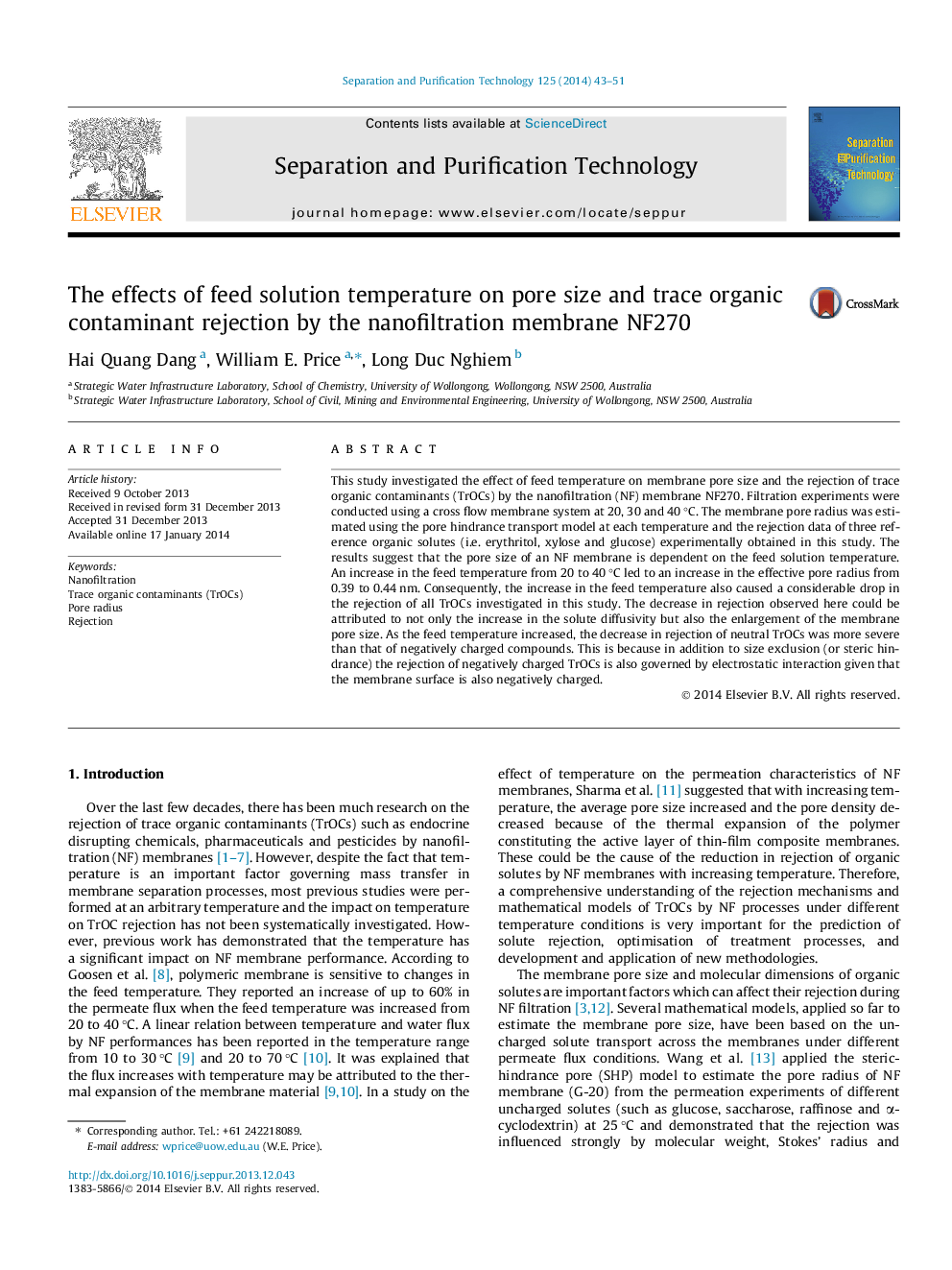| Article ID | Journal | Published Year | Pages | File Type |
|---|---|---|---|---|
| 641308 | Separation and Purification Technology | 2014 | 9 Pages |
•A model was used to assess the impact of temperature on membrane pore size.•Membrane pore size increased as the solution temperature increased.•Impact of temperature on TrOCs rejection was significant.•The impact was more pronounced for neutral compared to charged TrOCs.
This study investigated the effect of feed temperature on membrane pore size and the rejection of trace organic contaminants (TrOCs) by the nanofiltration (NF) membrane NF270. Filtration experiments were conducted using a cross flow membrane system at 20, 30 and 40 °C. The membrane pore radius was estimated using the pore hindrance transport model at each temperature and the rejection data of three reference organic solutes (i.e. erythritol, xylose and glucose) experimentally obtained in this study. The results suggest that the pore size of an NF membrane is dependent on the feed solution temperature. An increase in the feed temperature from 20 to 40 °C led to an increase in the effective pore radius from 0.39 to 0.44 nm. Consequently, the increase in the feed temperature also caused a considerable drop in the rejection of all TrOCs investigated in this study. The decrease in rejection observed here could be attributed to not only the increase in the solute diffusivity but also the enlargement of the membrane pore size. As the feed temperature increased, the decrease in rejection of neutral TrOCs was more severe than that of negatively charged compounds. This is because in addition to size exclusion (or steric hindrance) the rejection of negatively charged TrOCs is also governed by electrostatic interaction given that the membrane surface is also negatively charged.
